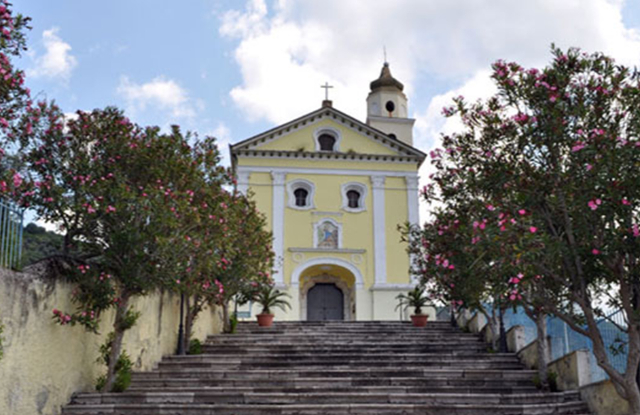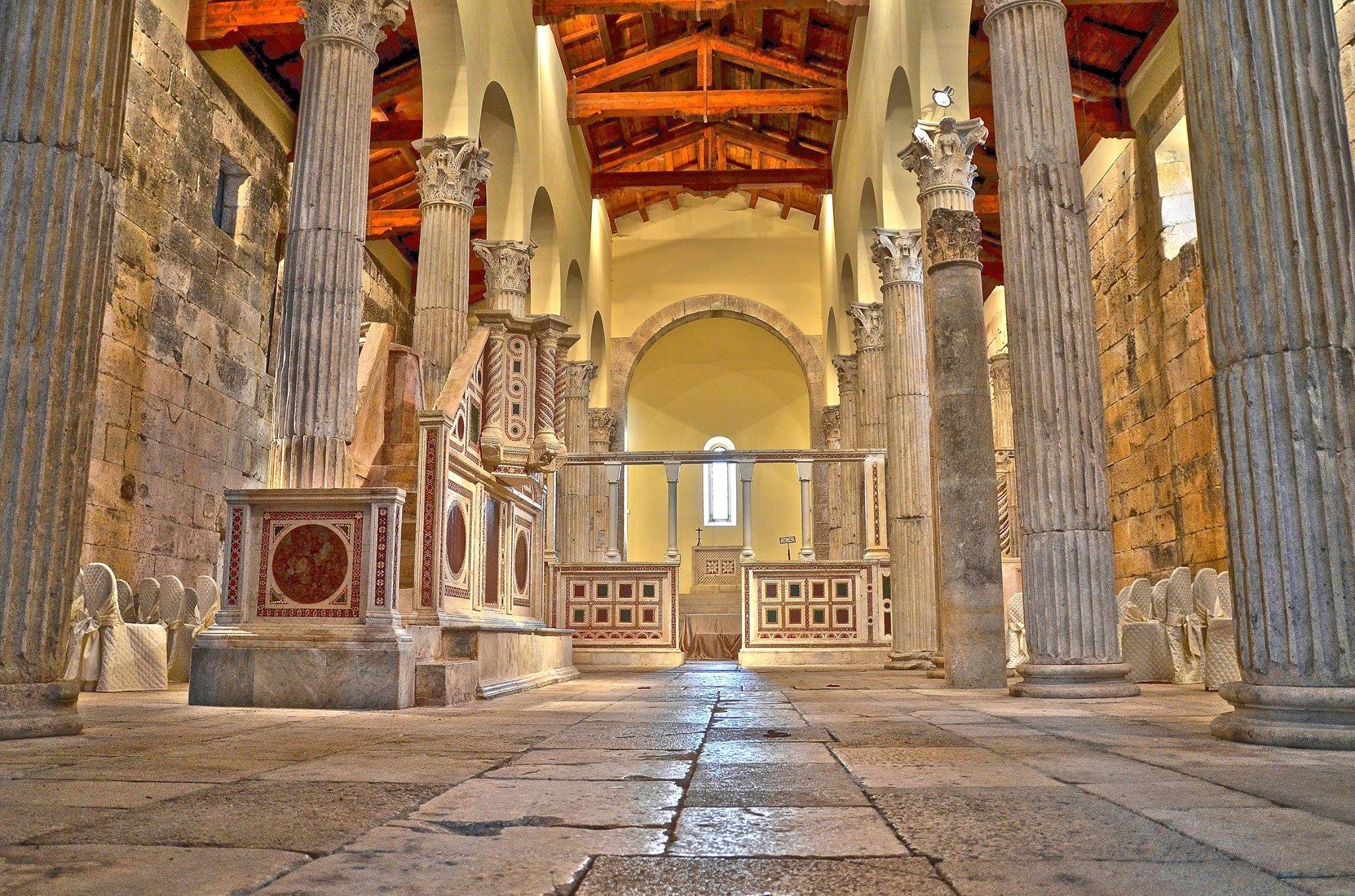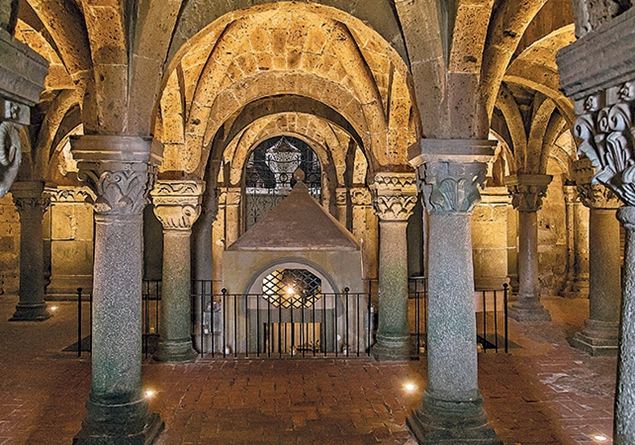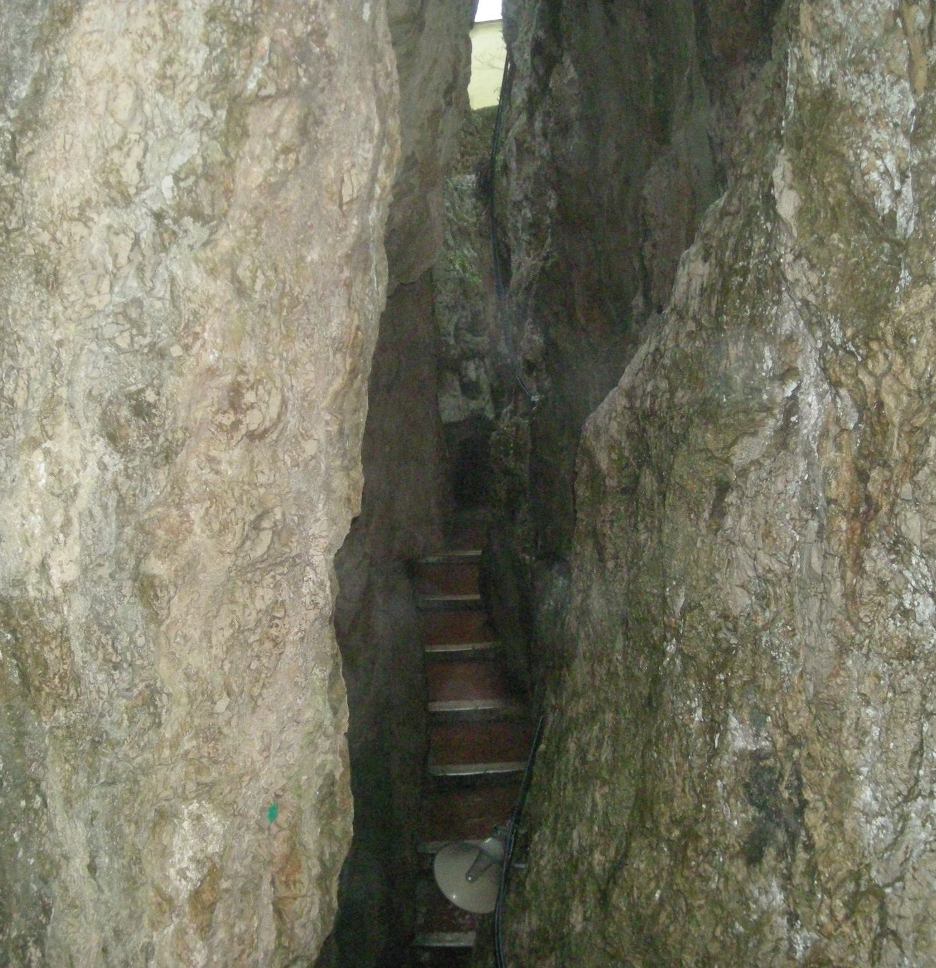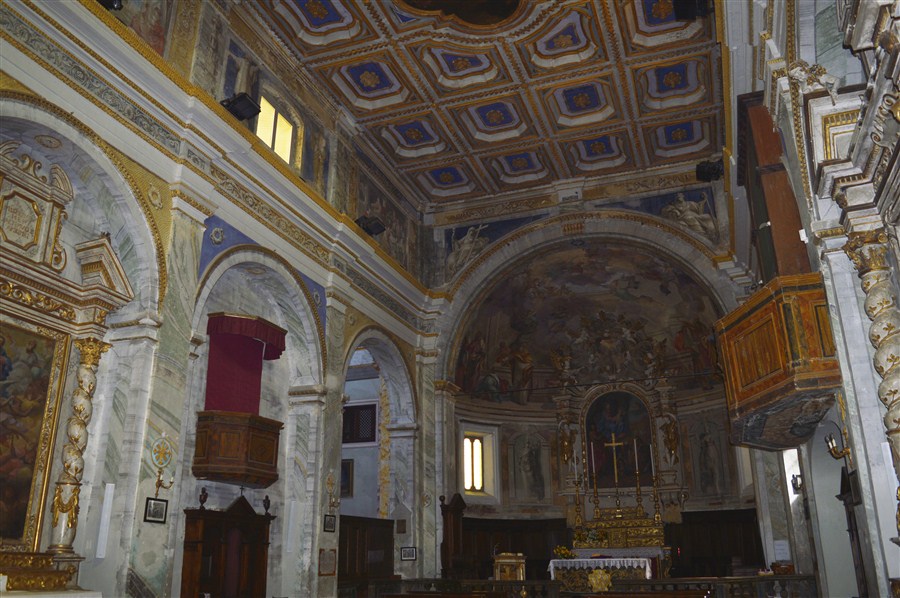The abbey San Bartolomeo, mentioned for the first time in a document of 914 with the dedication to the Saviour, presents three distinct and important building phases, to which we have to add one that emerged only from the archaeological excavations and that can be referred to a cult building datable between the 5th and the 6th century situated in correspondence of the present apsidal area.\The first one is particularly significant for its antiquity: in fact, the basement parts of the walls of the apsidal area and of the left transept – with large parts in opus spicatum – date back to the early Middle Ages, between the 7th and the 8th century. Of this important phase, which makes the building a very important testimony in the panorama of the early medieval architecture of Lucca, there are also some sculptural fragments preserved inside the church: the most important of them are three small pillars that until recently were walled together to form the base for a modern tabernacle and that have been recently disassembled to be restored and exhibited in the exhibition Lucca and Europe. An Idea of the Middle Ages. V-XI century held in Lucca in 2010. Other fragments of lesser value but that would require a specific study are preserved in a room under the presbyterial area, together with fragments of plaster with traces of painting. The second phase of the building is the one in which it has substantially assumed its present appearance and dates back to the late 11th century: structures of this period are also those in the upper part of the apsidal area and of the left transept, in addition to the perimeter walls of the building with the exception of the facade. In the apse such intervention is better preserved and shows a masonry conducted in regular rows of squared ashlars with a decoration of double arches on hanging pilasters. The dating to the eleventh century is motivated not only by the constructive and decorative solutions described, but also by the presence of some ceramic basins walled in the structure, among which an Egyptian specimen of the mid eleventh century; a reuse of a fragment of Roman mosaic is instead that used in the arch of the portal of the transept. The fresco decoration at the base of the presbyterial basin, depicting geometric motifs, vegetal shoots and a bearded man and close to contemporary miniatures of the Lucca area, also belongs to this phase. In this period – at the beginning of the 12th century – the abbey passed under the Camaldolese rule for the will of the bishop of Lucca Rangerio. The last consistent intervention on the church, carried out in the 18th century, implied the shortening of about seven metres and the consequent reconstruction of the façade, to which a portico was then added. The interior was also rebuilt on that occasion, but the baroque appearance was completely cancelled during a restoration of the sixties of the twentieth century.In the interior there is a table of Agostino Marti with the Madonna on the throne between the saints Bartholomew and Martin performed by the painter in 1516 on commission of the family Gigli; in the predella are depicted the Martyrdom of St. Bartholomew, the Lamentation over the dead Christ and the Alms of St. Martin. \(www.luccaterre.it)


